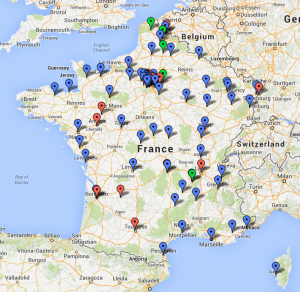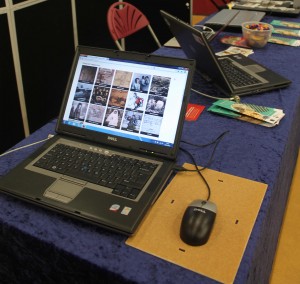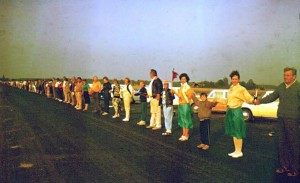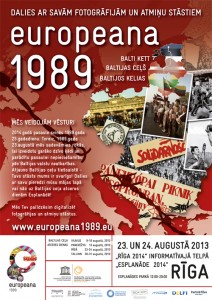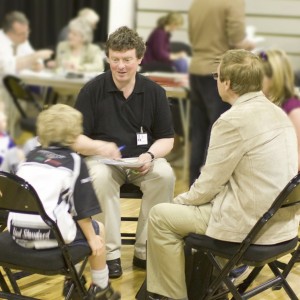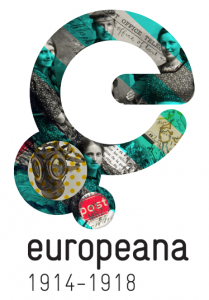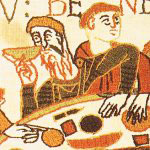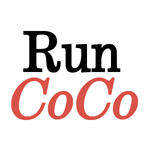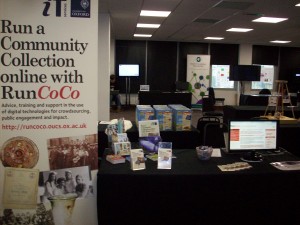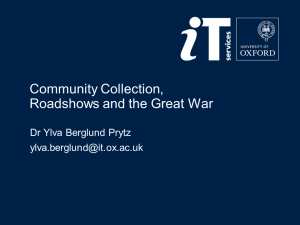
Mostyn Williams. Added to the http://europeana1914-1918.eu collection by Sue Worringham [CC BY-SA]
98 years ago today, 3 September 1915, Mostyn Williams, a private of the A Company, 11
th Batt., ‘The Welsh’ Regiment, picked up his pen and started recording his experiences of active service during the First World War.
First entry: September 3rd 1915
In army 1 year. Preparing kit for departure.
He was shipped to France the following day, and later to the Balkans. For over two years he documented his life at the front in brief but poignant daily entries. He writes about daily routines, training and leisure among the horrors of war, offering us an insight into what life at the front could be like.
June 9th 1917
Enemy plane over at dawn, flying very low & firing machine gun into our camps, 4 killed, 10 wounded. Cold shower at R.A.M.C. bath house, getting quite clean.
10th Sunday
Windy & inclined to rain, bath at R.A.M.C, lazed about for remainder of day.
11th
Coy. drill & general parades, very warm.
12th
Work on communication trench past control post, much aerial activity, one anti-aircraft H.E. dropped very near us while working.
Williams records both mundane and special events with a similar degree of detachment. He rarely voices negative thoughts or feelings, other than stating that he is tired, thirsty, or wet. That makes the entries where he does allow himself to express his horror all the more affecting:
September 13th, 1916
Prussians in huge numbers counterattack, we played havoc with our shrapnel but eventually had to retire, saw many of our boys wiped out with machine guns, wounded limping back to our trenches under murderous shrapnel fire, many ghastly scenes, too horrible to record.
Living under hard and testing conditions, Williams nevertheless manages to see and the positive, usually in a curt and unsentimental fashion, which in some ways makes these entries all the more moving:
January 16th 1916, Sunday
Thawing, first butter for 2 months, wonderful moonlight effect on snow.
17th
Lovely day. Bob ill.
18th
Lovely day, good louse.
19th
Orderly.
20th
Building trench all day.
21st
Same old job, cold.
22nd
Ditto
In September 1917, just over three years after joining up and after two years of life at the front, Williams is seriously wounded:
September 23nd 1917 Sunday (entry re-created afterwards, as noted in his diary)
Enemy send over T.M.s into our trenches. Went on right post again at night. Bulgars send down party to bomb post. They landed one bomb amongst us, wounded me in the abdomen & thigh. Had a terrible journey down to F.A., spent the night there & was taken in motor to 31st Clearing Station at Janis. Operated on immediately. The first 7 days were terrible, great pain & continuous injections of morphia, but after this period became much better.
He is initially treated locally, and after about a month sent by hospital ship to Malta, where he spends another two months before returning to the UK in early January 1918. After a short convalescence in hospital he can go home on leave on January 21 1918.
After that, the diary only contains a few short notes about the following year in Williams’s life. He is back on duty, but remains in the UK. The last entry, from February 1919, simply states:
8.2.19
Draft of £4.10 from Pay office.
In his diary entries, Williams often spells out the names of people and places. This means that it may now be possible for us plot his whereabouts on a map, compare his notes to those of others’, or find more information about his fellow soldiers.
September 7th1915
Arrived at Longneau, detrained and marched 9 miles through Amiens to Bertangle, billeted in barn in yard of fine old chateau. Fine orchard, plenty fruit, water scarce, mostly unfit to drink.
9th
1915 Physical and inspection in morning. Short route march in afternoon. Billy Coutts accidentally killed by machine gun. Concert in barn, good. Charlie Chaplin.
10th Sunday
Trench digging. Billy Coutts buried, very nice.
The diary contains an appendix, where Williams lists various locations with short descriptions (presumably added after the war). Also included are a few poems written by Williams while on active service.
Little ole tin ‘at
Blimey! ‘ow I’ve cussed ‘im
When the batts been on the trek,
An’ ‘e’s ‘anging like a millstone,
Around yer bleedin’ neck,
Foe e’s stickin’ like a limpet
Underneath yer steadying straps,
And yer says “Another bloomin’ mile,
And I’ll bleedin’ well collapse”
And now perhaps yer wondering,
Why the ‘ell I chew the fat
Well I’m only just referrin’
To me little ole tin ‘at.
But when there’s somethin’ doin’
An’ yer in yer fightin’ kit
And yer creeps behind the barrage
Just to give ole fritz a fit,
Then the sudden death is flyi’
In big ‘andfuls through the air
When the coalboxes is bustin’,
An’ there’s shrapnel everywhere,
When ole Jim Death is stalking
’Mongst the boys of the ole batt,
There’s many blokes says “Thank yer”,
To their little ole tin ‘at.
M.W. 8/7/17
The notebooks in which Mostyn Williams wrote his diary have been transcribed by his granddaughter Sue Worringham, who also added the material to the Europeana 1914-1918 community collection site http://europeana1914-1918.eu . She writes about Williams: “He survived the war but was never a well man afterwards and died in 1935, leaving 3 daughters.”
To explore the diary further, go to http://europeana1914-1918.eu/en/contributions/5910. Many more stories and objects relating to the period of First World War, shared by people across the World, can be found at http://europeana1914-1918.eu.
Europeana 1914-1918 is a community collection run by Europeana, Europe’s digital archive, library and museum, based on an initiative at the University of Oxford. Thousands of stories and images from across the World can be freely explored and re-used at http://europeana1914-1918.eu
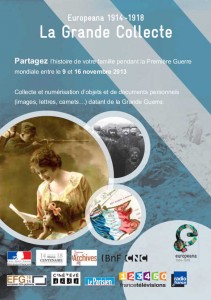 t of other countries in line to join the initiative. There are currently no plans to run a similar, national campaign in Britain but individuals can add their material to the archive via the website: http://europeana1914-1918.eu. Anyone interested in holding a local collection event is welcome to contact the Europeana 1914-1918 team at the University of Oxford (runcoco@it.ox.ac.uk) for advice and guidance.
t of other countries in line to join the initiative. There are currently no plans to run a similar, national campaign in Britain but individuals can add their material to the archive via the website: http://europeana1914-1918.eu. Anyone interested in holding a local collection event is welcome to contact the Europeana 1914-1918 team at the University of Oxford (runcoco@it.ox.ac.uk) for advice and guidance.